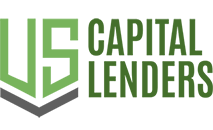
The economy is a complex machine, with many interconnected parts influencing its overall health. One key indicator of economic well-being is the employment rate. But did you know that employment rates also play a significant role in determining lending conditions? Understanding this connection can be crucial for businesses seeking financing.
Low Unemployment: A Borrower’s Market?
When unemployment rates are low, it generally signals a strong economy. More people are employed, leading to increased consumer spending. This surge in spending boosts demand for goods and services, often resulting in higher revenues for businesses. This positive economic climate translates into more favorable lending conditions.
Why? Lenders are more confident in borrowers’ ability to repay loans when the economy is thriving. With more people working and businesses generating higher revenues, the perceived risk of default decreases. As a result, lenders may offer more attractive terms, such as lower interest rates, more flexible repayment schedules, and more straightforward qualification requirements. Businesses seeing increased opportunities for growth are also more likely to seek financing to expand operations, invest in new equipment, or hire additional staff. This increased demand for credit, coupled with the willingness of lenders to provide it, creates a more competitive lending environment, often benefiting borrowers.
High Unemployment: A More Cautious Approach
Conversely, when unemployment rates rise, the economic landscape shifts. Job losses lead to decreased consumer spending as people tighten their budgets. Businesses may experience a decline in demand, impacting their revenue streams. This economic downturn makes lenders more cautious.
With higher unemployment, the risk of loan defaults increases. Lenders become more selective, tightening their approval requirements. They may demand higher credit scores, larger down payments, or more substantial collateral. Businesses, particularly those with less-than-perfect credit histories, may find it significantly more challenging to secure financing during periods of high unemployment. This credit crunch can hinder business growth and investment, potentially exacerbating the economic downturn.
Navigating the Lending Landscape
Understanding the relationship between employment rates and lending conditions is crucial for businesses. Whether unemployment is high or low, careful planning and preparation are essential for securing financing.
- During periods of low unemployment, Businesses should take advantage of favorable lending conditions to invest in growth initiatives. Now is the time to explore options like expanding operations, upgrading equipment, or launching new product lines. Comparing offers from multiple lenders can help secure the most favorable terms.
- During periods of high unemployment, Businesses need to be more proactive and prepared. Strengthening financial statements, demonstrating a solid business plan, and exploring alternative financing options (like SBA loans or lines of credit) can increase the chances of securing funding. Maintaining open communication with lenders and demonstrating a clear strategy for navigating the economic downturn is also essential.
Working with a Trusted Lender
Regardless of the employment rate, partnering with a reputable and experienced lender is vital. US Capital Lenders understands the intricacies of the lending market and can help businesses navigate the challenges and opportunities presented by varying economic conditions. We can provide guidance, support, and tailored financing solutions to help your business thrive, no matter the economic climate. Please reach out to us today to discuss your financing needs and explore how we can help you achieve your business goals.
